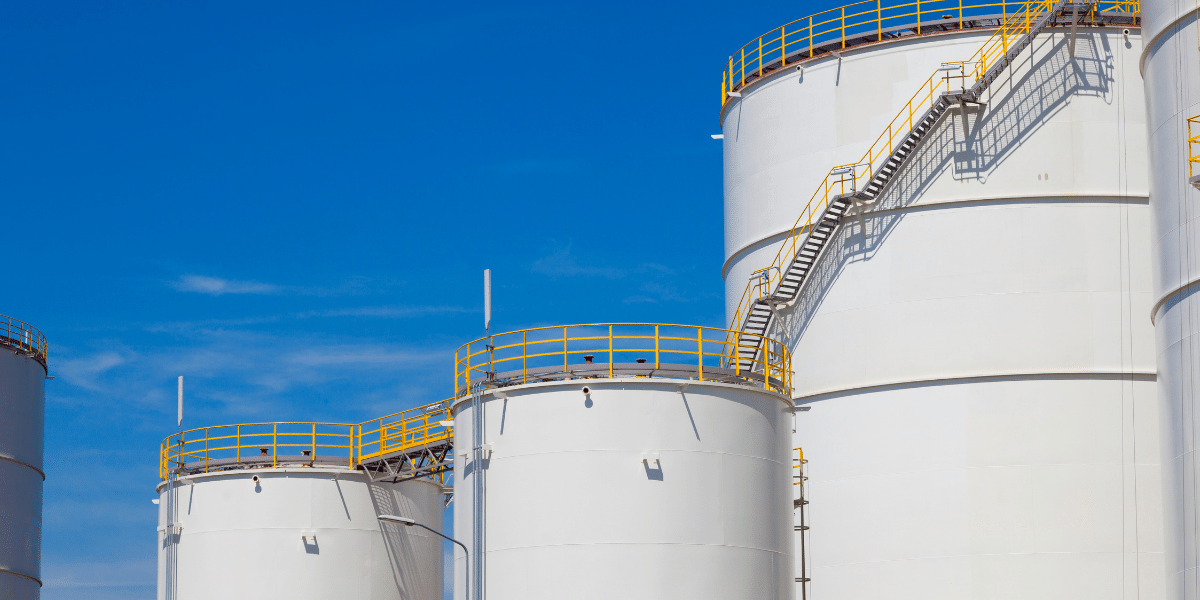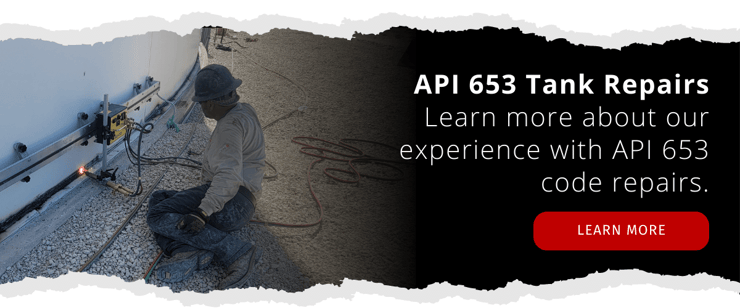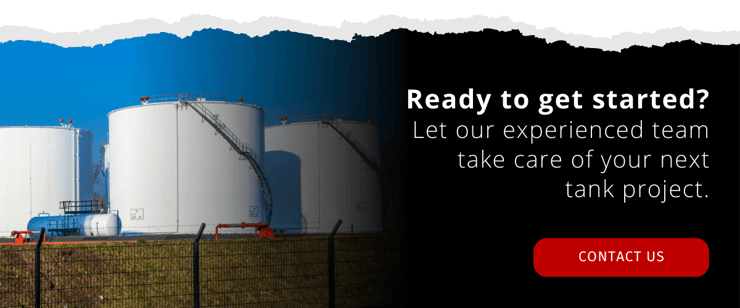3 min read
API 653 Inspections: The Importance of Tank Maintenance
Concord Tank Corporation
May 8, 2023 11:30:00 AM

Storage tanks play a critical role in many industrial processes, from storing crude oil and chemicals to housing water for municipal use. As such, it's essential to ensure that these tanks are in good condition and free from leaks or other defects. One way to accomplish this is through the API 653 standard, a set of guidelines for the inspection, repair, alteration, and reconstruction of aboveground storage tanks (ASTs). In this blog post, we’ll explore what exactly an API 653 inspection involves and why they are so important for keeping your tanks safe and functional.
- What is an API 653 Inspection?
- Why are API 653 Inspections important for tank maintenance?
- How does an API 653 Inspection work?
- How often should API 653 Inspections be done?

What is an API 653 Inspection?
API 653 is a standard developed by the American Petroleum Institute (API) that provides guidance for maintaining the integrity of ASTs. The standard outlines the minimum requirements for inspecting and repairing ASTs that are in-service or out-of-service. The guidelines cover a wide range of topics, including inspection frequency, corrosion protection, and tank bottom inspection.
Why are API 653 Inspections important for tank maintenance?
There are several reasons why API 653 Inspection is critical for maintaining tanks, including:
Safety: ASTs contain hazardous materials, and a leak or failure can have severe consequences. Regular inspections can help identify potential issues before they become major safety hazards, reducing the risk of accidents and injuries.
Compliance: Many industries are subject to regulations that require regular tank inspections. The API 653 standard provides guidelines that help facilities meet these requirements and avoid fines or other penalties for non-compliance.
Cost savings: Early detection of tank issues can help avoid costly repairs or tank replacements. By identifying potential problems early, facilities can take action to mitigate damage and reduce the overall cost of maintenance.
Longevity: Proper tank maintenance can extend the life of the tank, ensuring that it remains functional and reliable for years to come. This can help facilities avoid the expense of premature tank replacement and maintain operations without disruption.
How does a API 653 Inspection work?
API 653 Inspections involve a thorough inspection of the tank, including a visual examination, ultrasonic thickness testing, and magnetic particle testing. Inspectors look for signs of corrosion, cracking, and other damage, and assess the overall condition of the tank. Based on the inspection results, recommendations are made for repairs or maintenance that may be necessary.
In addition to providing preventative maintenance services, qualified inspectors can help tank operators comply with safety regulations and ensure that their systems are code compliant. This is especially important as local codes may change over time; a qualified inspector can help keep a tank system up-to-date according to current standards. Furthermore, having an experienced professional inspect and test a tank system can provide peace of mind that the system is functioning properly.
How often should API 653 Inspections be done?
API 653 requires that tanks be inspected and tested at least once every five years (internals) and twice per year (externals). During this inspection, a qualified inspector evaluates the tank's structural integrity, as well as its operating conditions by checking for signs of corrosion or wear. The inspector will also test the tank's components and materials for any deterioration that could cause a safety risk or disruption in service.
Regular API 653 inspections are the key to ensuring that tanks remain in good working order and meet industry standards. By performing regular maintenance and keeping up with inspection requirements, tank owners can reduce risks, identify potential problems early, and maintain their systems for years to come.
Conclusion
API 653 Inspection is a critical component of tank maintenance, helping to ensure the safety, compliance, and longevity of ASTs. By adhering to the guidelines set forth in API 653, facilities can take proactive steps to identify potential tank issues and address them before they become major problems.
If you're responsible for the maintenance of ASTs, be sure to incorporate API 653 Inspection into your maintenance plan to keep your tanks in good condition and avoid costly repairs or replacements. At Concord Tank, we have a reliable network of partnerships that can cover your inspection needs. Contact us today to learn how we can help with your next tank project.
ABOUT CONCORD TANK
Concord Tank Corporation specializes in tank repairs and terminal maintenance. We help simplify and expedite your projects without sacrificing safety and quality. From initial decommissioning through to the final return to service, our experienced team can take care of your tank project needs. Our services include API 653 tank repairs, in-service leg pinning, terminal maintenance projects, storage tank cleaning, floating roof seal repairs, aluminum IFR installation, and more.

